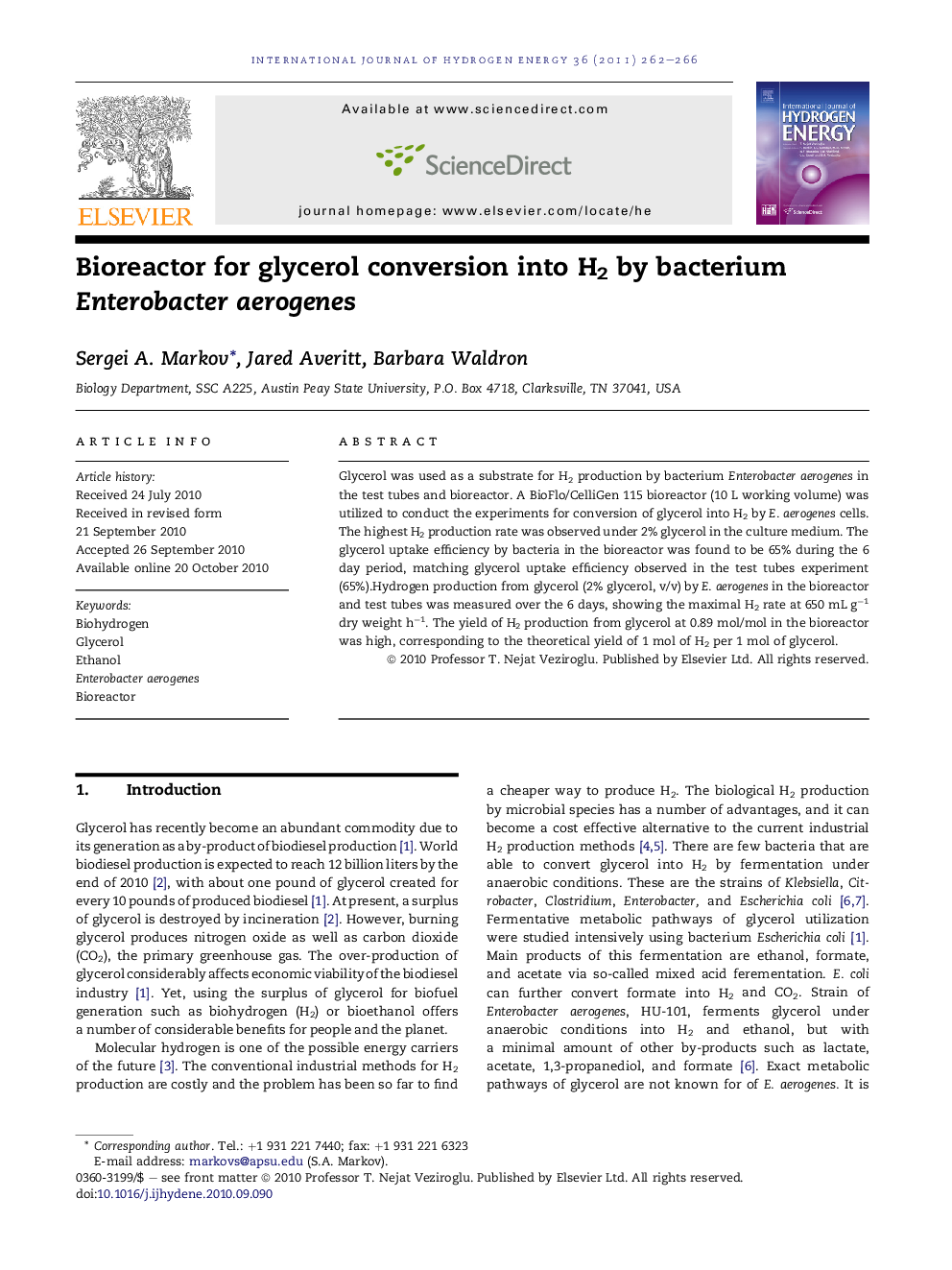| Article ID | Journal | Published Year | Pages | File Type |
|---|---|---|---|---|
| 1277774 | International Journal of Hydrogen Energy | 2011 | 5 Pages |
Glycerol was used as a substrate for H2 production by bacterium Enterobacter aerogenes in the test tubes and bioreactor. A BioFlo/CelliGen 115 bioreactor (10 L working volume) was utilized to conduct the experiments for conversion of glycerol into H2 by E. aerogenes cells. The highest H2 production rate was observed under 2% glycerol in the culture medium. The glycerol uptake efficiency by bacteria in the bioreactor was found to be 65% during the 6 day period, matching glycerol uptake efficiency observed in the test tubes experiment (65%).Hydrogen production from glycerol (2% glycerol, v/v) by E. aerogenes in the bioreactor and test tubes was measured over the 6 days, showing the maximal H2 rate at 650 mL g−1 dry weight h−1. The yield of H2 production from glycerol at 0.89 mol/mol in the bioreactor was high, corresponding to the theoretical yield of 1 mol of H2 per 1 mol of glycerol.
Research highlights► Enterobacter aerogenes converts glycerol into H2 with higher yield (0.89 mol/mol). ► Stirred-tank bioreactor allows higher rates of H2 production from glycerol (650 mL g−1 dry weight h−1). ► Energy conversion efficiency of glycerol into H2 by bacterium is 13.7%.
